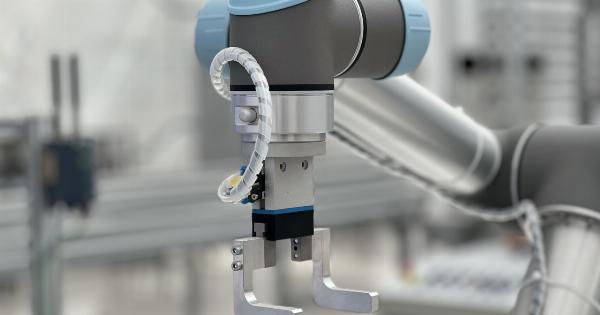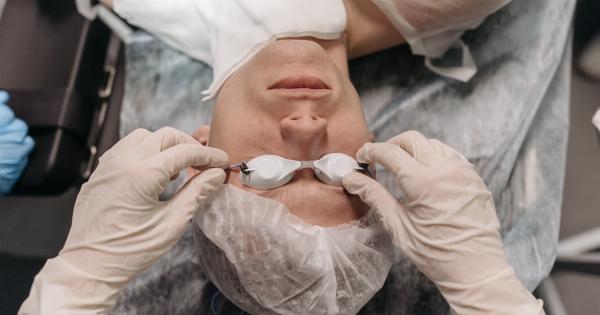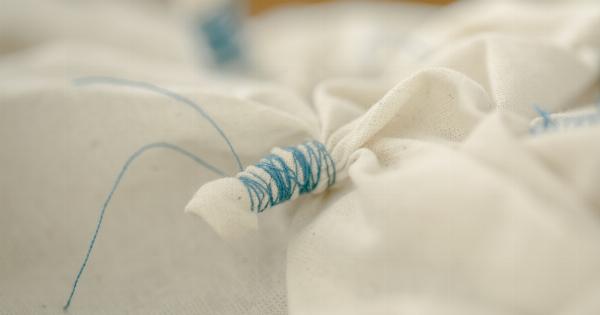Hip arthroplasty, also known as hip replacement surgery, is a common procedure that many people undergo to improve their quality of life. The surgery involves replacing a damaged hip joint with an artificial one.
Although the procedure is relatively safe and successful, there are several mistakes that patients can make during their recovery that can lead to complications and prolong their healing time. Below is a list of the top 30 mistakes that patients make after hip arthroplasty:.
Mistake #1: Not following the recommended physical therapy and exercise regimen
Physical therapy and exercise are crucial in ensuring a successful and speedy recovery after hip arthroplasty.
Patients who do not follow the recommended regimen put themselves at risk of developing complications such as blood clots, infections, and joint stiffness.
Mistake #2: Returning to regular physical activities too soon
Patients often feel a sense of accomplishment after hip arthroplasty and want to return to their normal physical activities quickly. However, doing so too soon can put stress on the new hip joint and may even cause it to dislocate.
It’s important to consult with your doctor before engaging in any physical activity.
Mistake #3: Ignoring pain and discomfort
Pain and discomfort after hip arthroplasty are normal; however, patients should not ignore any pain or discomfort that persists or worsens. This could be a sign of a complication, and immediate medical attention should be sought.
Mistake #4: Failing to take prescribed medication
Prescribed medication is essential in managing pain and preventing complications after hip arthroplasty. Failure to take medication as directed can lead to pain, discomfort, and even infections.
Smoking: Mistake #5
Smoking can slow down the healing process and increase the risk of complications after hip arthroplasty. Patients who smoke should quit before the procedure and should avoid smoking during the recovery process.
Mistake #6: Not getting enough rest
Rest is crucial in allowing the body to heal after hip arthroplasty. Patients who do not get enough rest are at risk of developing complications such as infection and joint instability.
It’s important to follow the doctor’s instructions and get plenty of rest.
Mistake #7: Neglecting wound care
Proper wound care is essential in preventing infections after hip arthroplasty. Patients should follow their doctor’s instructions on how to care for the wound and keep it clean and dry.
Mistake #8: Not wearing compression stockings
Compression stockings are often recommended after hip arthroplasty to prevent blood clots. Patients who fail to wear them are at a higher risk of developing deep vein thrombosis, a serious complication that can be life-threatening.
Mistake #9: Not elevating the leg
Elevating the leg is important in reducing swelling and promoting healing after hip arthroplasty. Patients who do not elevate their leg are at risk of developing complications such as blood clots and joint stiffness.
Mistake #10: Not drinking enough water
Drinking enough water is essential in preventing dehydration, which can lead to complications such as blood clots and constipation after hip arthroplasty. Patients should drink plenty of water and other fluids as directed by their doctor.
Mistake #11: Overexerting the hip joint
Overexerting the hip joint can put stress on the artificial hip joint and may cause it to dislocate.
Patients should avoid activities that require excessive bending or twisting of the hip joint and consult with their doctor before engaging in any physical activity.
Mistake #12: Not using assistive devices as directed
Assistive devices such as crutches, walkers, or canes are often recommended after hip arthroplasty to allow the patient to move around safely.
Patients who do not use these devices as directed by their doctor are at risk of falls and other complications.
Mistake #13: Not attending follow-up appointments
Follow-up appointments are essential in monitoring the patient’s progress and detecting any complications after hip arthroplasty. Patients who fail to attend these appointments may miss important information about their recovery.
Mistake #14: Not telling the doctor about new symptoms
New symptoms such as fever or unusual pain could be a sign of a complication after hip arthroplasty. Patients should notify their doctor immediately if they experience any new or unusual symptoms.
Mistake #15: Ignoring signs of infection
Signs of infection such as redness, swelling, or drainage from the surgical site should not be ignored after hip arthroplasty. Patients should notify their doctor immediately if they experience any signs of infection.
Mistake #16: Not maintaining a healthy diet
A healthy diet is crucial in providing the body with the necessary nutrients to heal after hip arthroplasty. Patients should follow their doctor’s instructions on what to eat and avoid to promote healing after the procedure.
Mistake #17: Not managing constipation
Constipation is a common complication after hip arthroplasty and can cause discomfort and even complications such as blood clots.
Patients should follow their doctor’s instructions on how to manage constipation and should not ignore any symptoms of constipation.
Mistake #18: Not waiting for the anesthesia to wear off before eating or drinking
Patients who eat or drink before the anesthesia wears off after hip arthroplasty are at risk of aspiration, a serious complication that can lead to pneumonia.
Patients should follow their doctor’s instructions on when to eat and drink after the procedure.
Mistake #19: Not using proper posture
Proper posture is important in preventing complications such as joint stiffness and nerve damage after hip arthroplasty. Patients should avoid slouching or hunching over and should use proper posture when sitting, standing, or walking.
Mistake #20: Not using proper sleeping position
Using proper sleeping position is important in preventing complications such as joint stiffness and nerve damage after hip arthroplasty. Patients should sleep on their back with a pillow between their knees to keep the hip joint in a neutral position.
Mistake #21: Not practicing proper hygiene
Practicing proper hygiene is important in preventing infections after hip arthroplasty. Patients should wash their hands often and avoid touching the surgical site with dirty hands.
Mistake #22: Not taking deep breaths and coughing
Deep breathing and coughing exercises are important in preventing complications such as pneumonia after hip arthroplasty. Patients should follow their doctor’s instructions on when and how to perform these exercises.
Mistake #23: Not keeping the hip joint in a stable position
Keeping the hip joint in a stable position is important in preventing complications such as joint dislocation after hip arthroplasty. Patients should avoid crossing their legs or bending their hip beyond 90 degrees.
Mistake #24: Not informing the dentist about the hip replacement
Patients who have undergone hip arthroplasty should inform their dentist about their hip replacement before any dental procedure. This is important in preventing complications such as infection after dental procedures.
Mistake #25: Not addressing anxiety and depression
Anxiety and depression are common after a major surgery such as hip arthroplasty. Patients who experience these symptoms should seek help from their doctor or a mental health professional.
Mistake #26: Not taking breaks during physical therapy
Taking breaks during physical therapy is important in preventing fatigue and injury after hip arthroplasty. Patients should listen to their body and take breaks when needed during physical therapy sessions.
Mistake #27: Not practicing proper wound dressing technique
Proper wound dressing technique is important in preventing infections after hip arthroplasty. Patients should follow their doctor’s instructions on how to dress the wound and avoid touching the surgical site with dirty hands.
Mistake #28: Not seeking help when needed
Patients who need help with daily activities such as bathing or dressing should not hesitate to ask for help after hip arthroplasty. Attempting to do these activities alone could lead to falls and other complications.
Mistake #29: Not wearing proper footwear
Wearing proper footwear is important in preventing falls and other complications after hip arthroplasty. Patients should wear shoes with non-slip soles and avoid wearing high heels or shoes with a narrow toe box.
Mistake #30: Not adhering to the doctor’s instructions
Following the doctor’s instructions is crucial in ensuring a successful and speedy recovery after hip arthroplasty. Patients should not deviate from the instructions or make their own decisions about their recovery.





















